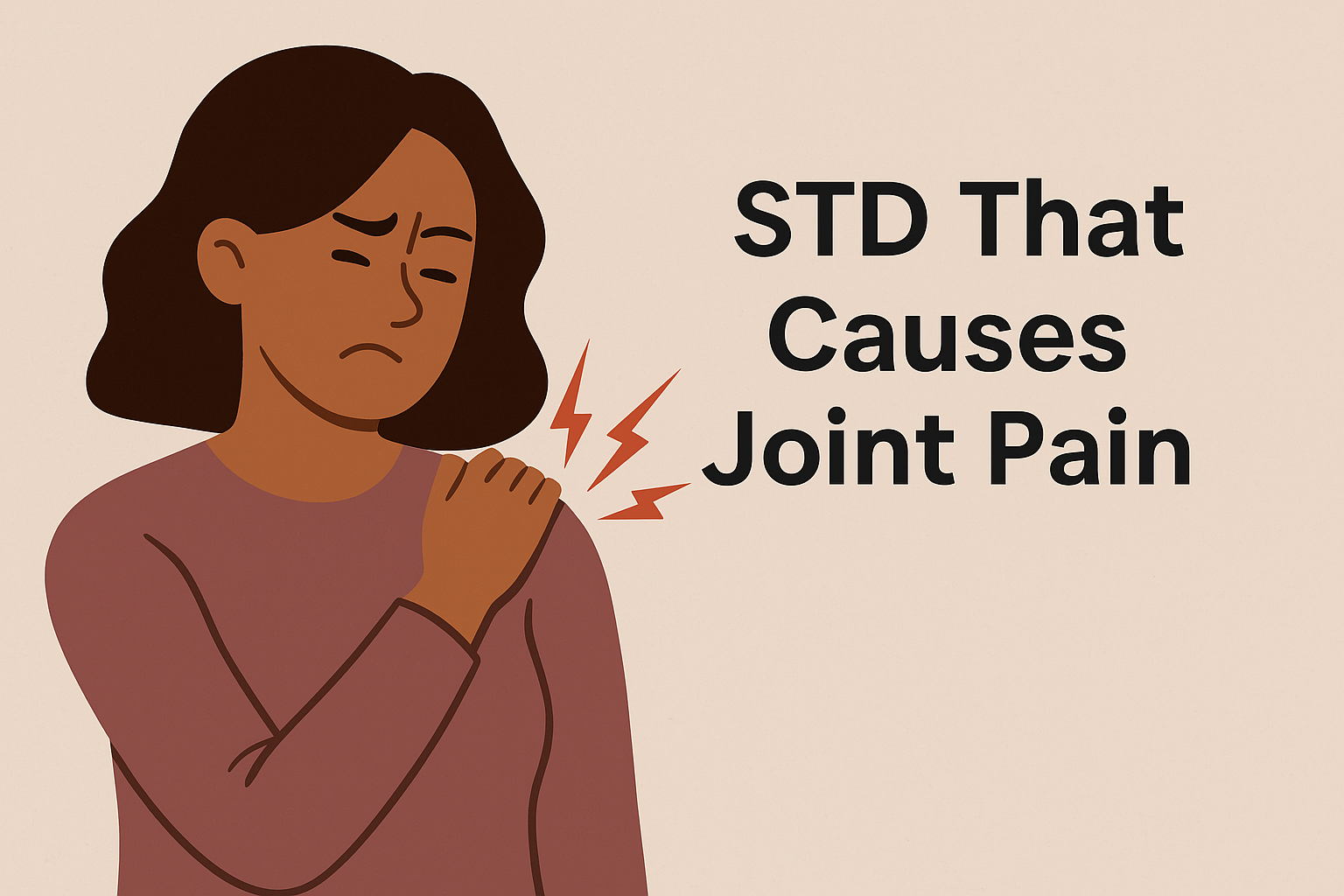Waking up with sore or swollen joints? Feeling stiffness in your knees, wrists, or fingers—and wondering if it’s just aging or something more?
Here’s something many don’t realize: some sexually transmitted diseases (STDs) can cause joint pain. And in some cases, joint pain may be one of the first or only symptoms.
In this article, we’ll break down the STDs most likely to cause joint pain, what signs to look for, and when it’s time to seek medical help.
Can an STD Really Cause Joint Pain?
Yes. Certain STDs can trigger inflammation in the joints, a condition known as reactive arthritis. This happens when your immune system responds to an infection—often in the urinary tract or genitals—and mistakenly attacks your joints.
This joint pain can range from mild to severe and often affects the knees, ankles, fingers, or spine.
STDs That Can Cause Joint Pain
1. Chlamydia
- Can lead to reactive arthritis, especially in men
- Symptoms appear after the infection, often weeks later
- Causes pain, swelling, and stiffness—usually in the knees, ankles, or feet
2. Gonorrhea
- May cause disseminated gonococcal infection (DGI), where the bacteria spread to joints
- Can result in septic arthritis—a painful, swollen joint that needs urgent treatment
- Also causes skin rashes or fever in some cases
3. HIV
- Can increase risk of joint issues, including arthritis or painful swelling
- Some people develop conditions like HIV-associated arthritis or joint pain related to immune dysfunction
- Pain may be chronic or come and go
4. Hepatitis B and C
- While not always sexually transmitted, they can be
- Both can cause arthritis-like joint pain, especially in early stages
- Often affects hands, knees, and other major joints
Other Causes of STD-Related Joint Pain
✔️ Reactive arthritis (Reiter’s syndrome) – Can follow infections like chlamydia or gonorrhea
✔️ Autoimmune response – Your immune system targets your joints by mistake
✔️ Infection spreading to the bloodstream – Especially dangerous with untreated gonorrhea
Symptoms to Watch For
✔️ Joint swelling, stiffness, or redness
✔️ Pain that moves from joint to joint
✔️ Fever or chills
✔️ Burning when urinating
✔️ Discharge or genital discomfort
When to See a Doctor
You should seek medical attention if: ✔️ Joint pain appears after a recent STD diagnosis or unprotected sex
✔️ Pain is severe, sudden, or paired with swelling
✔️ You notice other symptoms like discharge, rash, or fever
✔️ You have a known STD and develop new joint symptoms
Diagnosis and Testing
✔️ Joint exam and medical history review
✔️ Blood and urine tests to detect STDs
✔️ Joint fluid aspiration (to check for infection)
✔️ Imaging (X-rays or MRI) if needed
Treatment Options
✔️ Antibiotics to treat the STD (chlamydia, gonorrhea, etc.)
✔️ Anti-inflammatory meds for joint pain
✔️ Rest and physical therapy to regain mobility
✔️ Partner treatment to prevent reinfection
Treating the underlying STD usually improves joint pain. But some people may need long-term care if arthritis symptoms continue.
Prevention Tips
✔️ Use condoms or dental dams during sex
✔️ Get tested regularly and encourage your partner to do the same
✔️ Avoid untreated infections, which can spread and cause complications
✔️ Talk to your doctor about any unusual symptoms—even if they seem unrelated to sex
Final Thoughts
Joint pain might not be the first symptom you think of when it comes to STDs—but it’s real, and it can be serious. If you’ve recently had unprotected sex and now your joints are aching, don’t just chalk it up to aging or overuse.
💙 Listen to your body. Get tested. And talk to your doctor.
Related Reads
References
- CDC – Chlamydia: cdc.gov/std/chlamydia
- CDC – Gonorrhea: cdc.gov/std/gonorrhea
- CDC – HIV: cdc.gov/hiv
- CDC – Hepatitis: cdc.gov/hepatitis

Leave a Reply